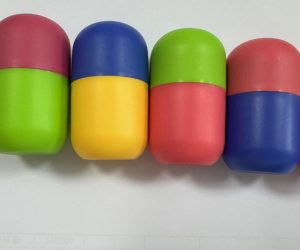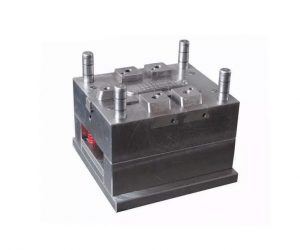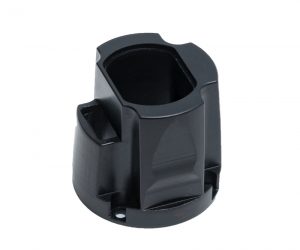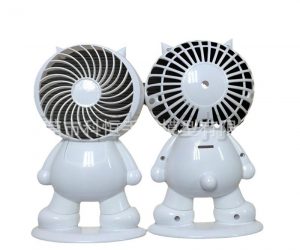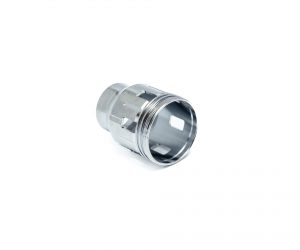In this guide, we're going to explore injection mold tooling—the backbone of plastic manufacturing. We'll cover the basics of injection molding and how it turns raw materials into top-notch products. You'll learn about choosing the right tooling and understanding its design and function. This guide gives you a complete overview of everything you need to know about injection mold tooling. Get ready to uncover the mysteries of plastic manufacturing and boost your business!
I. Introduction
A. What is Injection Molding?
Injection molding is a complex and advanced manufacturing process. It involves injecting molten plastic into a carefully made mold to create precise components. This method is very versatile and has become a symbol of efficiency, precision, and the ability to mass-produce detailed designs consistently across many industries.
B. Why Injection Molding Tooling Matters
At the heart of injection molding is the crucial role of tooling. It's often seen as the unsung hero of the process. The quality, precision, and repeatability of the final products depend on the tooling used. Understanding the intricacies of tooling is essential for anyone involved in plastic manufacturing.
C. What This Guide Is About
This comprehensive guide aims to simplify the complex world of injection molding tooling. It will provide deep insights into its various types, materials, design considerations, maintenance challenges, and successful applications. Whether you are just starting out or looking to deepen your expertise, mastering the secrets of injection molding tooling is key to excelling in the ever-evolving field of plastic manufacturing.
II. Basics of Injection Molding Tooling
A. Different Types of Injection Molding Tools
Core Tools:
Core tools are like the main directors in mold making. They shape the inside parts of the plastic product, creating hollow spaces and detailed designs that make each part unique.
Cavity Tools:
Cavity tools work with core tools to shape the outside of the plastic product. They carve out the big design, helping to create the overall look and structure of the final product.
Side Panel Tools:
Side panel tools add special touches to the sides of the molded product. They help make sure everything is just right, adding both accuracy and a bit of beauty.
Ejector Pin Tools:
Ejector pin tools help remove the finished product from the mold smoothly. They act like stagehands, making sure the product comes out clean and perfect.
B. Materials Used in Injection Molding Tools
Steel:
Steel is often used because it's very strong and can handle high temperatures and pressures. It's a great choice for making lots of products quickly.
Aluminum:
Aluminum is light and conducts heat well, which makes it good for prototypes and smaller production runs. It's a flexible option for different needs.
Titanium:
Titanium combines strength with lightness, making it ideal for projects where precision and long-lasting quality are important.
Other Metal Alloys:
There are also other metal alloys like beryllium-copper and nickel alloys. Each alloy has its own special features, like better heat conduction or resistance to wear and tear, making them suitable for specific tasks.
III. Design Considerations for Injection Molding Tooling
A. Mold Flow Analysis
Mold flow analysis is like a crystal ball for the mold. It simulates the journey of molten plastic inside the mold. This analysis helps find potential problems and offers ways to make things better. It ensures that the mold fills evenly and has strong structural integrity.
B. Cooling Systems
Efficient cooling systems are crucial for maintaining the mold's strength and ensuring the product cools evenly. Well-designed cooling systems speed up the production process and create a smooth, efficient workflow.
C. Gate Design
Gate design is very important because it controls how molten plastic enters the mold cavity. A well-thought-out gate design ensures a controlled flow, prevents defects, and optimizes the injection molding process for different types of products.
D. Ejector System
The ejector system is responsible for gently removing the finished product from the mold. A well-made ejector system ensures a smooth exit without damaging the product or the mold, making for a perfect finish.
IV. Maintenance and Troubleshooting of Injection Molding Tooling
A. Cleaning and Lubrication Techniques
Regular cleaning and lubrication are essential for preventing wear and maintaining the effectiveness of injection molding tooling. Proper techniques help extend the life of the tooling and ensure consistent performance.
B. Common Issues and Their Solutions
Understanding and resolving common issues like flash, sink marks, and warping is crucial for effective troubleshooting. This knowledge allows manufacturers to quickly fix problems, keeping production smooth and efficient.
C. Preventive Maintenance Strategies
Implementing preventive maintenance strategies, including routine inspections and well-planned maintenance activities, helps avoid unexpected downtimes. This prolongs the life of the tooling and ensures a continuous, high-quality production flow.
V. Case Studies: Successful Applications of Injection Molding Tooling
A. Automotive Industry
In the fast-moving world of cars, injection molding tools are super important. They make detailed parts like the inside panels, dashboards, and outside pieces. This method's accuracy and speed are crucial for meeting the high-quality standards in the car industry.
B. Medical Device Manufacturing
When it comes to making medical devices, precision and cleanliness are everything. Injection molding tools play a key role here too. They create things like syringes, vials, and covers for medical machines. These tools show they can handle very tight measurements and make complicated shapes, proving their skill in this important field.

